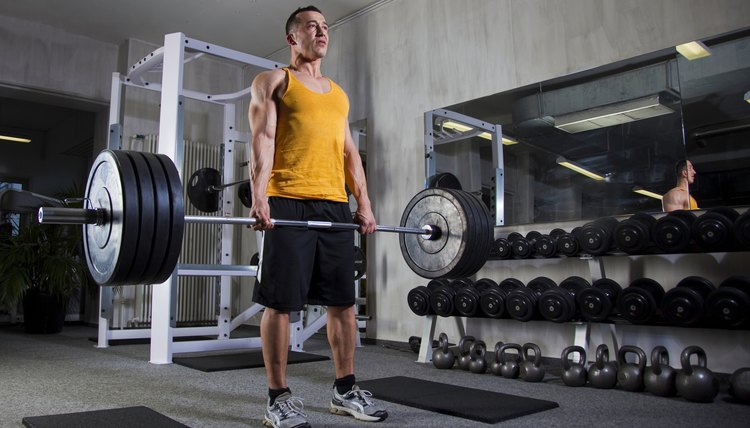What does fact checked mean?
At SportsRec, we strive to deliver objective content that is accurate and up-to-date. Our team periodically reviews articles in order to ensure content quality. The sources cited below consist of evidence from peer-reviewed journals, prominent medical organizations, academic associations, and government data.
The information contained on this site is for informational purposes only, and should not be used as a substitute for the advice of a professional health care provider. Please check with the appropriate physician regarding health questions and concerns. Although we strive to deliver accurate and up-to-date information, no guarantee to that effect is made.
Which Muscles Do Deadlifts Target?

There's a reason why deadlifts are one of just three powerlifts, along with squats and bench presses — there are very few exercises that require your full body strength to pick up heavy objects off the floor, which is harder than it sounds. The standard barbell deadlift targets the gluteus maximus, but it also utilizes muscles ranges from your trapezoids down to your hamstrings.
Deadlift's Target Muscle
Although there are a variety of types of deadlifts that emphasize different muscles, the traditional barbell deadlifts targets the gluteus maximus, commonly known as your butt muscles. Strong glutes offer a bevy of benefits in both your everyday life and in athletics.
When you have strong glutes, you have more effective hip extension. This affects both running, walking and essentially every movement you make to push yourself forward. Strong tush muscles also allow you to easily lower yourself down — and stay steady while doing it — and to jump and land without injury.
Assisting Synergists
When you're doing a deadlift, the synergists are the muscles that assist your glutes in completing the move. These synergists are all in the lower body and include the quadriceps, adductor magnus, the top half of the hamstrings and soleu.
Stabilizing Muscles
Stabilizer muscles aren't actually used in a movement such as a deadlift, but they are called on to keep your body stable — and with that, they get a workout. During a deadlift, stabilizers are the bottom half of the hamstrings and the gastrocnemius, as well as the erector spinae, trapezius, levator scapulae and rhomboids in the upper half of the body.
They act to stabilize one joint so the desired movement can be performed in another joint. These muscles usually aren't directly involved in a movement, but work to keep you steady so that your primary muscles can do their job.

Incorporating the barbell deadlift into your workout strengthens your glutes.
Proper Deadlift Execution
You can only be sure that you're working the proper muscles during a deadlift if you're sure that you're doing the exercise itself correctly.
HOW TO DO IT: Stand in front of a barbell on the ground. Squat down and grasp the bar with your hands shoulder-width apart. Although you can deadlift with an alternated grip — meaning that one palm is facing up and one palm is facing down — a double overhand grip allows you to build grip strength, which will improve your other lifts.
Lifting the weight, stand up and extend your hips, place your knees in full extension and pull the shoulder back. Pause for a moment and then push the hips back, allow the knees to bend, keep the knees straight and place the barbell back on the floor.
References
Resources
Writer Bio
Kelsey Casselbury is a freelance writer and editor based in central Maryland. Her clients have included Livestrong, School Nutrition magazine, What's Up? Media, American Academy of Clinical Chemistry, SmartBrief and more. She has a formal education in personal training/nutrition and a bachelor's degree in journalism from The Pennsylvania State University.
